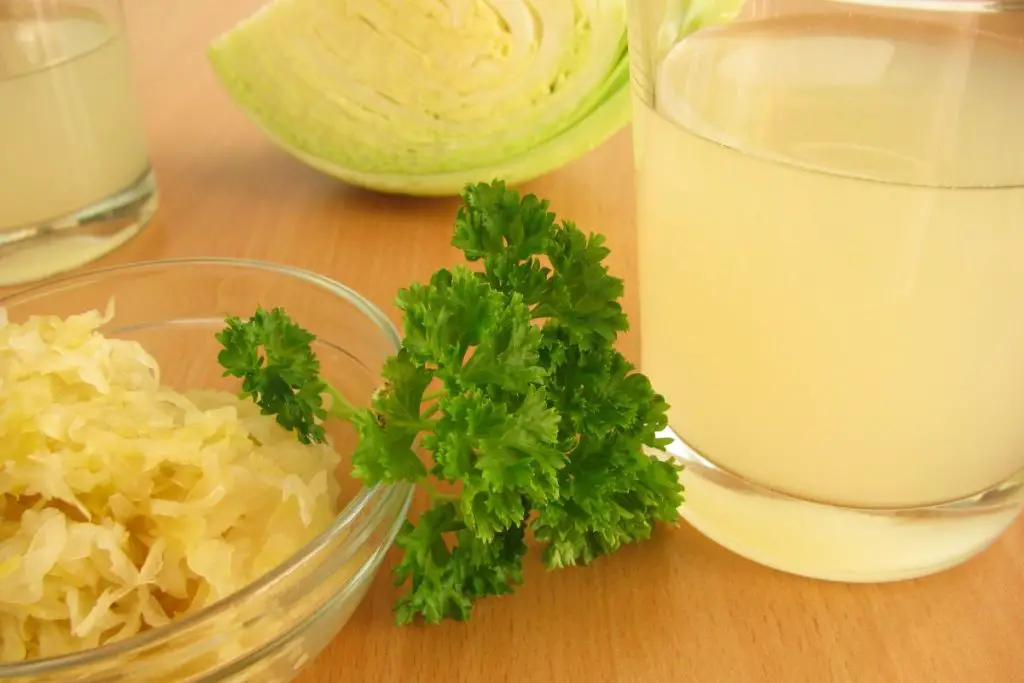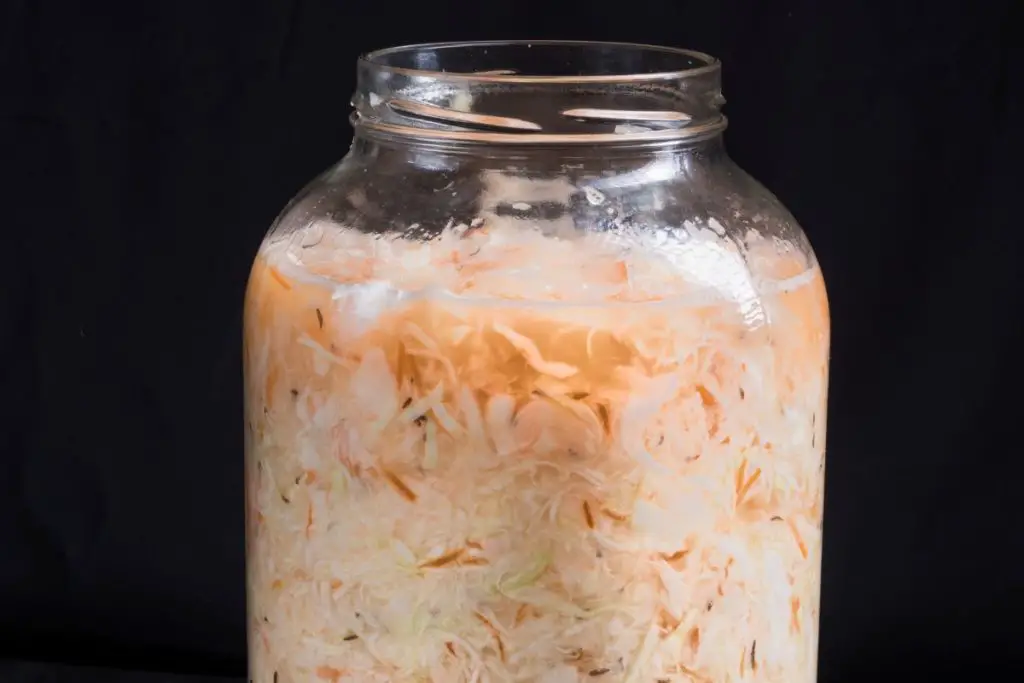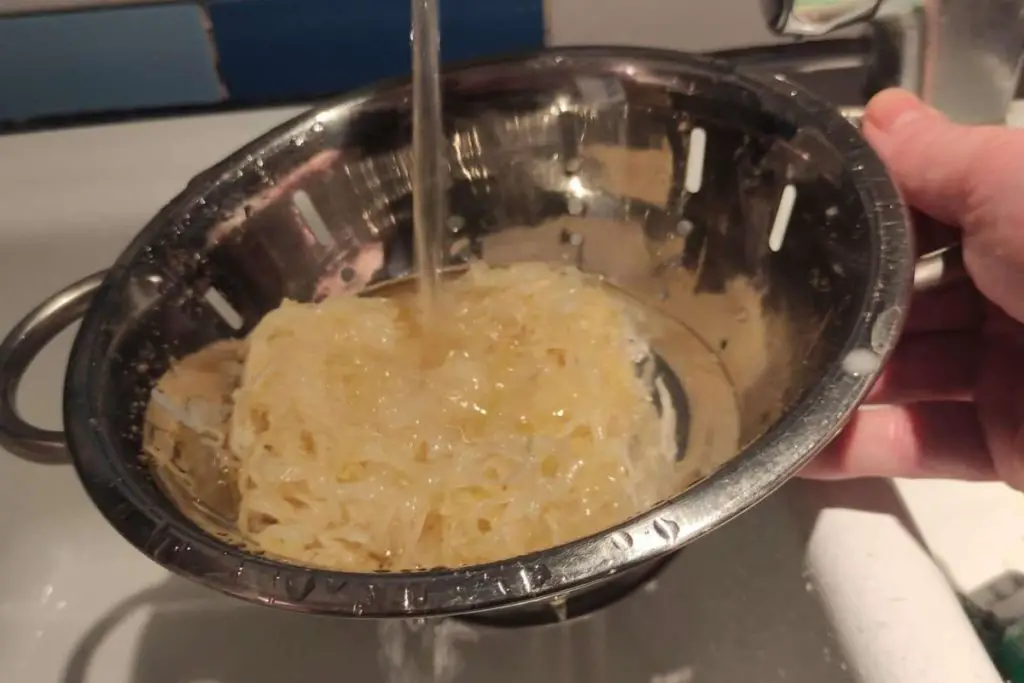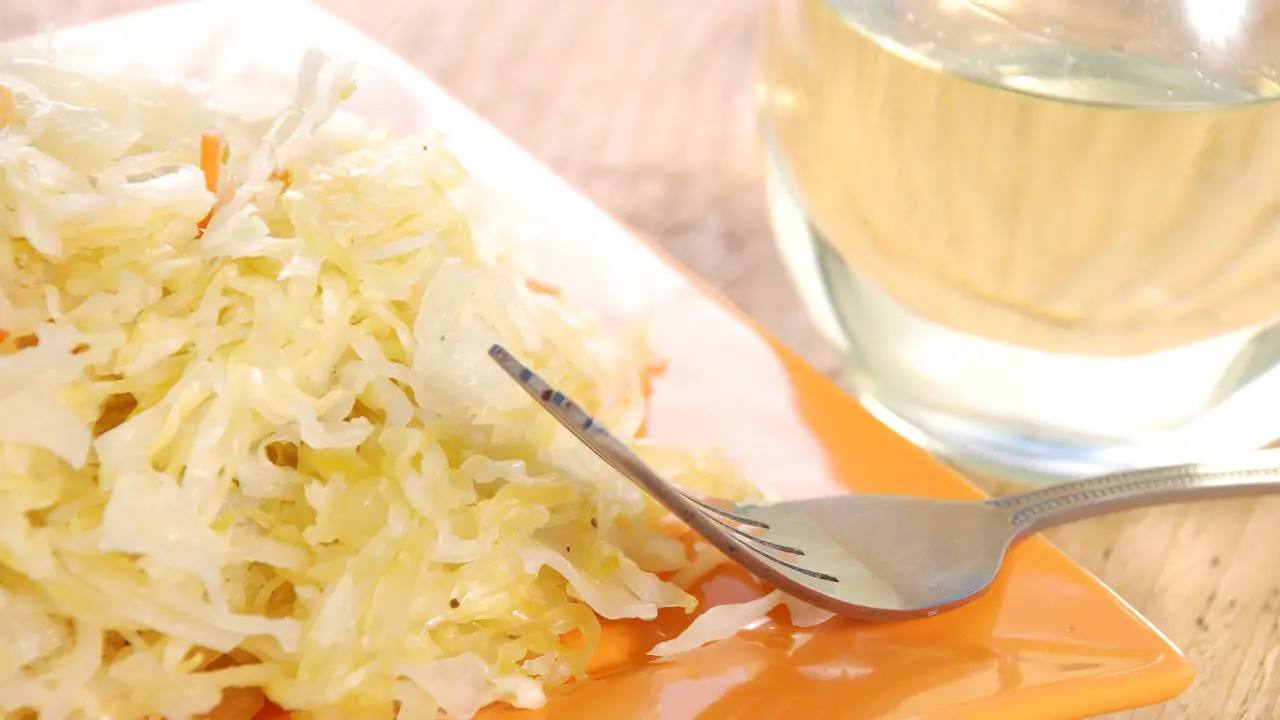Sauerkraut is the rising trend of consuming fermented foods, and that is for a good reason. This fermented cabbage is low-calorie fat-free food, loaded with fiber, vitamins K and C, and probiotics from good bacteria that strengthen your gut biome.
However, there is something else that sauerkraut is loaded with, and that is sodium chloride, also known as salt. Commercially made sauerkraut could contain anywhere between 900 to 1600 milligrams of sodium for a single one-cup serving. That is about half a teaspoon of salt in just one serving.
But, salt is not necessarily a bad thing and is an essential part of making sauerkraut, but if you are trying to cut down on your sodium intake or it is just a bit too much for your taste buds.
Then here are some tips on how to remove salt from sauerkraut.
1. Drain The Brine

The first measure you should take is draining some of the brine from the sauerkraut. That is not going to remove all the salt, but it will significantly reduce the overall sodium content and won’t drastically affect the taste or its probiotic benefits.
According to the USDA Nutrient Database, undrained sauerkraut can contain twice as much sodium as its drained counterpart, therefore draining some or all of the brine is a simple and effective way to reduce the salt without affecting its taste or nutritional value.
Top Tip: Don’t throw away the brine but use it as a salad dressing, add it to probiotic smoothies, or use it for picking vegetables.
2. Dilute The Brine (But Not Too Much!)

If the kraut is still a bit too salty—or if you’d rather not get rid of all the brine—then diluting it with filtered fresh water should be the next logical step.
Open your sauerkraut jar and remove a significant portion of the brine, depending on how salty it is. However, keep in mind that it is best to proceed slowly and little by little, as you can always remove more brine afterward if you still deem it too salty.
After removing the excess brine, replace its space in the jar with filtered or distilled water.
Read Also: How To Make Sauerkraut Without Salt – Easy Recipe In The Jar.
3. Rinse The Excess Salt Out Of The Sauerkraut

If none of the aforementioned techniques give you a satisfactory result, a good way how to remove salt from the sauerkraut is by rinsing it with clean, cold water.
The most efficient method is placing the cabbage on a large strainer, then pouring the cold distilled water on top, making sure to use your hands to move the sauerkraut around to make sure to rinse off as much sodium as possible.
Although rising the raw, uncooked sauerkraut is a very effective method to make it less salty, you will also be rinsing away a good amount of beneficial bacteria! So, rinsing should not be your first option if you are eating sauerkraut raw for the probiotic benefits.
However, if you are planning to cook it later then this does not matter as the heat would kill most of the good bacteria anyway.
While rinsing, feel free to taste the sauerkraut halfway through as this method works so well for reducing sodium that you could end up with a bland and tasteless cabbage if done too much.
Check Out These 5 Best Sauerkraut With The Most Probiotics.
4. Balance Your Plate

Sometimes the trick is not removing salt from the sauerkraut but from your other foods.
With some creativity and experimentation, you can always mix your salty sauerkraut with unsalted food, therefore balancing out the flavor without any further work.
For example, when cooking with sauerkraut don’t add any extra salt, bouillon cubes, or salty spice mixes, and let the meat or vegetable absorb the excess salt leaving you with a perfectly seasoned dish.
Keep in mind that cooking sauerkraut will reduce or completely eliminate its probiotic properties so you can also do that with raw kraut, like making these healthy probiotic recipes, adding some apples, onion, and carrots, or other vegetables to balance out the extra saltiness.
Once we are on the topic of reducing sodium in your diet, check out my latest article here: How To Cook Without Salt? (14 Flavorful Salt-Free Alternatives).
